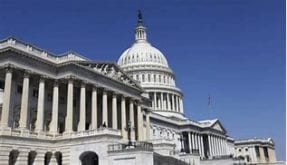iranintl – Iran’s economy minister says the government budget’s tax revenues reached 8,000 trillion rials ($13.5 billion), achieving 108% of the projected target during the last fiscal year, which ended on March 21.
Ehsan Khandouzi did not elaborate on the year-on-year growth of tax revenues, but noted that the government had gained 4,700 trillion rials in tax revenues the previous year, indicating a substantial growth.
Iran’s primary source of budget revenue is oil exports, which remain sanctioned by the United States. Although Tehran sells approximately 1.3 million barrels a day to China, it is unclear how much cash it actually receives due to ongoing international banking sanctions. Therefore, the government began a hard push in early 2023 to increase taxes and boost tax collection.
Over the last three years, the budget’s tax revenues have increased by more than 162%. For the current fiscal year, the government aims to collect over 13,000 trillion rials in tax revenues, a 62% increase compared to the previous fiscal year. In simple terms, this represents a 326% increase in tax revenues compared to 2021. Consequently, the share of tax revenues in the government budget has risen from 25% to 53% during this period.
Surging tax revenues during former President Ebrahim Raisi’s tenure (Aug. 2021-May 2024) coincided with increasing poverty among Iranian citizens. For instance, per capita meat consumption declined by one-third between 2020 and 2023, according to the Food and Agriculture Organization of the United Nations (FAO) statistics.
Why government raises taxes?
Before US sanctions on Iran in 2018, about 40% of government budget was relied on oil revenues, but it declined to 21% in the current year, because of ‘maximum pressure’ oil sanctions.
The Iranian government projected total domestic sales and exports of oil and gas revenues in the budget at 6,414 trillion rials, about half of the tax revenues, or about $11 billion at current exchange rates. Officially, the government budget has less than a 50% share of oil export revenues: 14.5% of the petrodollars are allocated to the National Iranian Oil Company, 2.5% to deprived regions, and the remainder to the National Development Fund (NDF).
However, in recent years, the government has also appropriated the NDF’s share of oil revenues to compensate for the budget deficit. Despite these measures, the government budget has consistently experienced a 30% deficit each year. This shortfall is due to oil revenues remaining significantly below pre-sanctions levels.
OPEC has not yet published its annual report for 2023, but Iran’s customs statistics indicate that the country’s oil export revenues were $37 billion during the last fiscal year. However, the actual cash income from crude exports to China remains a secret. Many observers believe some of the income is held in China for Iranian imports.
Another reason for rising tax revenues is inflation. According to the International Monetary Fund’s estimates, the annual inflation rate has averaged above 42% since 2020.
However, even accounting for the inflation rate, the Iranian government should have increased taxation by a maximum of 160%, not 326%.
 Shabtabnews In this dark night, I have lost my way – Arise from a corner, oh you the star of guidance.
Shabtabnews In this dark night, I have lost my way – Arise from a corner, oh you the star of guidance.



